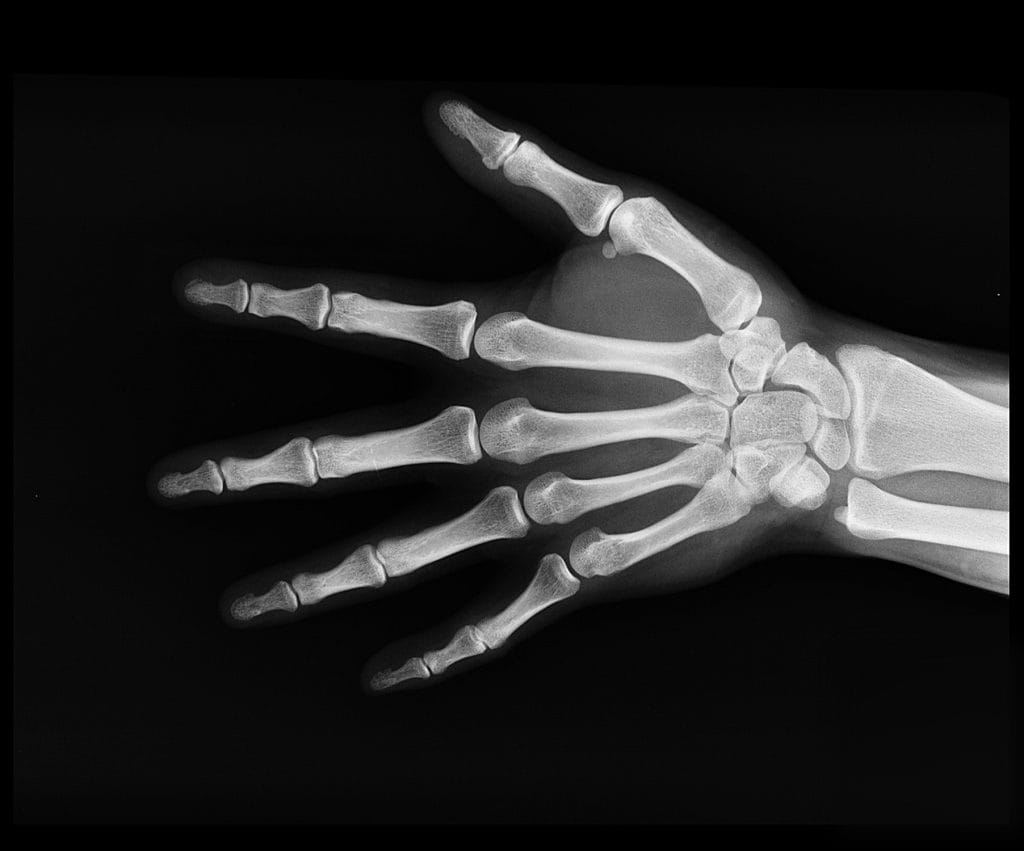Picture this: you’re dealing with a medical mystery, and who do you call? Not Sherlock Holmes, but a radiologist! These medical sleuths use cool tech like X-rays, CT scans, and MRIs to crack the case and figure out what’s happening inside your body. Get ready to be amazed by the hidden world they uncover, from the latest gadgets they use to the mind-blowing discoveries they make. Buckle up, because the world of radiology is about to become your new favorite mystery show!
Fun Facts About Radiologists
Ever wonder what it’s like to see inside the human body without picking up a scalpel? Radiologists do that every day! They’re the doctors who use cool technology like X-rays, ultrasounds, and MRIs to diagnose and treat all sorts of medical conditions. Let’s dive into some fascinating facts about these “image detectives” of the medical world:
- Peanut Butter Panic? Not for Radiologists! Imagine a worried parent rushing their child to the emergency room, convinced they’ve swallowed something they shouldn’t have. Radiologists are often the heroes of these situations, using X-rays to spot foreign objects lodged in a child’s airway, enabling doctors to remove them swiftly and safely.
- Detecting Life Before It’s Even Confirmed You know those home pregnancy tests? Well, sometimes radiologists can spot a developing baby even earlier! Certain imaging techniques may reveal a pregnancy before traditional tests pick it up. Talk about having an “inside scoop” on new life!
- Solving Mysteries with Science Radiologists don’t just work in hospitals. Some lend their expertise to forensic investigations, analyzing X-rays of deceased individuals to help determine the cause of death, identify victims, and even uncover crucial clues in criminal cases.
- Speaking in “Radiolatese” Ever hear doctors talking in what sounds like a secret code? Radiologists have their own specialized language called “Radiolatese.” While it might sound complicated, it actually helps them communicate findings quickly and precisely with other medical professionals.
- The X-Ray Revolution – Thanks to Wilhelm Röntgen! Did you know the first X-ray machine was invented back in 1895? A German physicist named Wilhelm Röntgen made this groundbreaking discovery, forever changing the way we see and understand the human body.
And there’s so much more! The world of radiology is constantly evolving. New technologies and research are always emerging, leading to even more incredible ways to diagnose and treat illnesses. So next time you think about the amazing capabilities of modern medicine, remember those skilled radiologists working behind the scenes, revealing the secrets hidden within us!
What are some facts about being a radiologist?
Radiologists are like the detectives of the medical field, using amazing technology to peek inside the human body without even making a cut! It’s their job to figure out what’s going on and help other doctors make the best decisions for their patients.
One of the most captivating aspects of radiology is the ever-evolving technology. It seems like every day there’s a new machine or technique that allows them to see things in even greater detail. This means radiologists are perpetually learning and exploring new frontiers in medicine.
While you might not meet a radiologist face-to-face as often as you would your regular doctor, they are a vital part of the healthcare team, working behind the scenes to analyze images, write reports, and guide your treatment plan.
Radiologists are also team players, constantly collaborating with other specialists. They might be on the phone with a surgeon, discussing the best way to approach a tricky case, or sharing their findings with a patient’s primary care physician. It’s a true team effort to ensure patients receive the best possible care.
And here’s something else that’s really important: radiologists are also teachers, training the next generation of doctors and technicians, sharing their knowledge and passion for the field. They’re shaping the future of medicine, one image at a time.
Here’s a glimpse into the world of radiology:
| What Radiologists Do | Why It Matters |
|---|---|
| Analyze X-rays, CT scans, and MRIs | To detect anything from broken bones to tumors, assisting doctors in making accurate diagnoses. |
| Perform image-guided procedures | To guide needles for biopsies or deliver targeted treatments with incredible precision. |
| Consult with other doctors | To discuss findings, recommend treatment options, and ensure the best possible care for patients. |
| Stay updated on new technologies | To provide the most advanced and effective imaging services available. |
It’s important to remember that our understanding of medicine is always evolving. New research and discoveries happen all the time, which means what we consider “facts” today might be refined or even challenged in the future – and that’s what makes this field so exciting!
What are some fun facts about radiology techs?
Radiology techs are the ones who snap those X-rays and other cool images that help doctors figure out what’s going on inside our bodies. They’re like artists who use their knowledge of science and technology to capture clear and helpful images. And sometimes, they stumble upon something unexpected in those images – leading to important discoveries.
But don’t worry, radiology techs prioritize safety! They’re like the superheroes of the medical imaging world, making sure patients are shielded from unnecessary radiation exposure. They’re pros at positioning people just right and using protective gear. Plus, they excel at putting patients at ease during what can be a nerve-wracking experience.
And here’s the best part: they never stop learning! The world of medical imaging is constantly evolving, with new technology popping up all the time. Radiology techs stay current on all the newest techniques and advancements to ensure they’re providing the best possible care. They’re skilled professionals, safety champions, and all-around awesome people who play a vital role in keeping us healthy.
Why is being a radiologist interesting?
Radiologists are like detectives of the human body, but instead of magnifying glasses and fingerprints, they use powerful imaging technology like X-rays, MRIs, and CT scans. Every image they analyze is a puzzle waiting to be solved. They carefully examine each detail, searching for anything out of the ordinary – from tiny fractures to suspicious shadows – making sure no two days are ever the same.
What’s truly exciting about radiology is that it’s a field that’s always changing. New technologies and techniques are constantly emerging, which means radiologists are always learning and refining their skills. Just imagine being among the first to work with cutting-edge imaging equipment, seeing inside the human body with greater clarity and detail than ever before!
But it’s not just about cool gadgets and intellectual challenges. At its core, radiology is about helping people. Their diagnoses guide treatment plans, offering potentially life-saving information to doctors and patients.
And here’s the best part: radiology isn’t a one-size-fits-all profession. It offers a diverse range of subspecialties, allowing radiologists to focus on what truly fascinates them. Some might be drawn to the complexities of the brain, becoming neuroradiologists, while others might be captivated by the intricate workings of the heart, specializing in cardiovascular radiology. This flexibility ensures a fulfilling career path that aligns with their individual passions.
Radiology is a field that combines intellectual stimulation with a deep sense of purpose, making it an incredibly rewarding and engaging profession.
What is an interesting fact about medical imaging?
The journey of medical imaging is a testament to human ingenuity! We’ve gone from clunky X-ray machines used on battlefields to mind-blowing MRI machines that can practically see inside your cells. It’s kind of mind-boggling when you think about it. This evolution isn’t just about fancier machines; it means we can spot problems earlier, treat them more effectively, and ultimately save more lives.
Medical imaging has made it possible to peer inside the human body without invasive procedures, letting doctors diagnose and monitor conditions with incredible accuracy. This means they can catch things early on, when treatment is most likely to be successful.
But here’s another cool thing – there isn’t just one type of medical imaging. It’s more like a toolbox with different tools for different jobs. You’ve got your X-rays, CT scans, and MRIs, each offering a unique perspective on the inner workings of the body.
And the most exciting part? There’s still so much we don’t know about the human body and how to image it! Researchers are constantly working on new techniques and refining existing ones. Who knows what the future holds? Maybe one day we’ll have imaging technology that can predict health problems before they even start!
What’s cool about radiology?
Radiologists are medical detectives, using cutting-edge technology to solve medical mysteries. They get to peek inside the human body, using medical imaging like X-rays, CT scans, and MRIs to figure out what’s going on. They’re often the first ones to spot a problem, and their expertise helps make sure patients get the right treatment at the right time.
But here’s the really cool part: radiology is always changing! New imaging techniques and technologies are being developed all the time, making it a really exciting field to be in. You’re always at the forefront of medical innovation.
And it’s not a solo mission! Radiologists work closely with a whole team of medical professionals to ensure patients receive the best possible care. So, if you enjoy collaboration, radiology might just be the perfect fit for you.
But what does this mean for patients?
It means that radiologists are playing a huge role in improving how we diagnose and treat diseases. They’re helping us catch things earlier, treat them more effectively, and improve patient outcomes. It’s a field where you can make a real difference in people’s lives.
Of course, like any field, there’s always more to learn in radiology. New discoveries are being made all the time, which is what keeps it so exciting!
What are different things a radiologist does?
Radiologists are like medical detectives, using powerful imaging tools to see inside the human body. Let’s explore the different facets of their work:
One of the most important things radiologists do is diagnostic imaging. Using X-rays, CT scans, MRIs, and even ultrasound, they carefully analyze images to identify abnormalities and diagnose a wide range of conditions.
But their work doesn’t stop at diagnosis. Radiologists are also key players in interventional radiology. Using those same imaging tools, but with incredible precision, they can guide tiny instruments through the body to perform minimally invasive procedures, like biopsies, opening blocked blood vessels, and even destroying tumors – all while minimizing damage to surrounding healthy tissue.
And did you know that some radiologists specialize in radiation therapy to treat cancer? They use carefully calculated doses of radiation to target and destroy cancer cells. This requires a deep understanding of both oncology and physics, making it a highly specialized field within radiology.
Here’s a table summarizing the different areas of radiology:
| Area of Radiology | What They Do |
|---|---|
| Diagnostic Imaging | Analyze images like X-rays, CT scans, and MRIs to identify abnormalities and diagnose conditions. |
| Interventional Radiology | Use imaging to guide minimally invasive procedures such as biopsies, stent placements, and tumor ablations. |
| Radiation Therapy | Plan and deliver targeted radiation therapy to treat cancer. |
Radiology is constantly evolving, with scientists and engineers constantly developing new imaging technologies and treatment techniques. This means that radiologists are on the cutting edge of medicine, constantly learning and adapting to provide the best possible care for their patients.
This is just a glimpse into the diverse world of radiology. There’s so much more to discover! If you’re interested in learning more, consider doing some research, talking to your doctor, or even reaching out to a radiologist yourself. You might just discover a fascinating career path you never knew existed!
What are the Positives of Being a Radiologist?
Let’s explore what makes radiology a rewarding and fulfilling career path:
Making a Real Difference: Radiologists use sophisticated imaging technology to help diagnose and treat a wide range of illnesses, their insights guiding doctors towards the best treatment plans and directly impacting patient outcomes.
A World of Specialties: Radiology offers a plethora of specialized areas, allowing radiologists to tailor their careers to match their passions and interests.
Teamwork Makes the Dream Work: Radiologists collaborate closely with a diverse team of medical professionals – doctors, nurses, technicians – to provide the best possible care.
Staying Ahead of the Curve: Radiology is a dynamic and evolving field, with new imaging technologies and techniques emerging all the time. Radiologists are constantly learning, refining their skills, and using the most advanced tools available.
The Thrill of the Unknown: Radiology often involves complex cases that require deep analytical thinking. It’s about piecing together subtle clues from various images to form a diagnosis, making it an intellectually stimulating and rewarding field.
In a Nutshell:
- Impactful: Radiologists are vital for accurate diagnoses and effective treatment plans.
- Specialized: The field offers a diverse range of subspecialties.
- Collaborative: It thrives on teamwork among medical professionals.
- Innovative: Radiology constantly evolves with new technologies.
- Challenging: The complexity of cases demands sharp analytical skills.
What does a radiologist do on a daily basis?
A radiologist’s day is filled with looking at X-rays, CT scans, MRIs, and other medical images, searching for clues to help diagnose their patients. They might be looking for anything from a simple fracture to signs of a more complex condition.
Their findings are then carefully documented in reports that are shared with the referring physician, who uses that information to make a diagnosis and develop a treatment plan.
But that’s not all! A radiologist’s day might also involve:
- Consulting with other healthcare professionals: Discussing imaging results and their implications.
- Performing image-guided procedures: Using their imaging expertise to guide minimally invasive procedures, such as biopsies.
- Sharing their wisdom: Many radiologists are also involved in teaching and mentoring the next generation of doctors.
While we often don’t see them face-to-face, radiologists are crucial members of the healthcare team, their ability to interpret those fascinating images helping countless people get the diagnoses and treatment they need.
Research into medical imaging is constantly evolving, which means a radiologist’s job is always changing and presenting new puzzles to solve. It’s a dynamic and fulfilling field at the forefront of medical advancements.
How many years is a radiologist?
The journey to becoming a radiologist is a significant commitment, typically requiring a minimum of 12 years of education and training.
- Undergraduate Degree (4 years): While a specific major isn’t always required, a strong background in science and math is highly beneficial.
- Medical School (4 years): This is where aspiring radiologists delve deep into the complexities of the human body and disease.
- Residency (4 years): This specialized training focuses on radiology, providing hands-on experience in interpreting various medical images.
- Fellowship (1-2 years, optional): Some radiologists choose to pursue further specialization in a specific area of interest.
It’s important to note that learning never truly stops in medicine, and radiology is no exception. New technologies and techniques emerge all the time, making it a field that demands continuous learning and a genuine passion for staying at the forefront of medical advancements.
What three things surprised you about the radiologic technology field?
Here are a few things that might surprise you about the world of radiology:
- It’s way more artistic than you’d think. Interpreting medical images requires a keen eye for detail and the ability to spot subtle patterns and variations. It’s like solving a puzzle, piecing together the story hidden within the images.
- The career paths are surprisingly diverse. Radiology offers a wide range of specialization options, allowing you to focus on specific areas like pediatrics, oncology, research, or even management and education.
- Radiology is everywhere in healthcare. From diagnosing broken bones in the emergency room to guiding biopsies and monitoring cancer treatment, radiology plays a vital role in virtually every aspect of patient care.
What’s the takeaway? Radiology is a captivating and dynamic field that’s constantly evolving. It’s about using technology to solve medical mysteries, improve patient lives, and push the boundaries of what’s possible in healthcare.
Did you know that sapphires are the birthstone for September? Learn other fascinating facts about sapphires here: fun facts about sapphires
- Crypto Quotes’ Red Flags: Avoid Costly Mistakes - June 30, 2025
- Unlock Inspirational Crypto Quotes: Future Predictions - June 30, 2025
- Famous Bitcoin Quotes: A Deep Dive into Crypto’s History - June 30, 2025

















1 thought on “Fun Facts About Radiologists”
Comments are closed.